Disclaimer: Moving Health Care Upstream is a collaborative effort originally co-led by Nemours Children’s Health System (Nemours) and the Center for Healthier Children, Families & Communities at the University of California- Los Angeles (UCLA). The views and opinions expressed in this article are those of the author(s) and do not necessarily reflect the official policy or position of Nemours, UCLA or the Moving Health Care Upstream initiative.
In this video blog post, Nemours Children’s Health System announces the release of a four part series: “Take 2: Reflections & Advice from Population Health Network Leaders”.
To read the series, CLICK HERE. To learn more about Nemours’ overarching body of work related to integrative activities as accelerators for population health networks, CLICK HERE.
We’d love to hear your reflections. Please leave a comment below the post, Tweet us at @MHCUpstream, or email us at [email protected].
TRANSCRIPT
BILAL: Hello. This is Bilal Taylor, Senior Program & Policy Analyst with the National Office of Policy & Prevention here at Nemours Children’s Health System. I’m here with Kate Blackburn, Manager of Practice & Prevention. And we’re excited to let you know that we’ve just released a four part series: “Take 2: Reflections & Advice from Population Health Network Leaders”. This series is part of a larger body of work (supported by The Kresge Foundation and by Nemours Children’s Health System) that explores the ways integrative activities can strengthen and sustain the efforts of cross-sector population health networks.
KATE: For context, Integrative Activities are the governance, management, and administrative functions that enable population health networks to carry out tasks and strategies related to the network’s shared population health goals.
BILAL: As organizations join networks in the spirit of tackling complex issues and systems (making sure every child in a community has access to healthy food, for example), and as we engage with partners from other sectors at the network’s table, we see the challenges of collaboration greatly increase. How do community residents and large institutions with their own missions and visions work on shared systems-change goals that may take years or decades to achieve? How do they continue to measure progress in way that keeps partners energized? Overcoming these challenges requires members of networks to be deliberate and strategic about use of integrative activities to keep the work on network on track and moving forward.
KATE: As you reflect on this post, we invite you to take a moment and think of the best (and worst) team assignments you had in school or work. What made the successful groups thrive? And what were some of the challenges of unsuccessful ones? Were the goals clear? Did the interest of individual members come before the good of the group? Did the team have a designated person accountable for keeping the group on track? Our hunch is that your best experiences in group assignments came when ownership of integrative activities (those administrative and management tasks) was just as present as ownership of project deliverables.
Let’s put a pin in our trip down memory lane and come back to the Take 2 series.
BILAL: This collection of notes from the field represents some of the learnings gleaned from our work with 9 population health networks that participated in Nemours’ 2020 Integrator Learning Lab, from January to September. The Lab experience was focused on helping networks to select and adopt integrative activities that would support and accelerate their strategies for improving measures of population health and health equity.
In each part of the four-part series, we invite you to Take 2- two reflections and two pieces of advice from folks deeply involved in making population health networks work.
KATE: In Part One, “Forming Integrative Networks”, our partners in Philadelphia, Pennsylvania and Paterson, New Jersey offer reflections on successful early stage integrator networks. How do you move forward with a sense of urgency, while still building the consensus that is so critical to have from the outset of a network?
In Part Two, “Re-Invigorating Integrative Networks”, our partners in Washington, D.C. and Flathead County, Montana offer reflections on what it takes to steer an existing network in a new direction. How do you honor some past successes and respond to the urgency of a new moment?
BILAL: In Part Three, “Planning for Network Sustainability”, our partners from Ventura, California and Sarasota, Florida reflect on what it takes to plan integrator networks with long-term sustainability in view. How do you stay true to the goals of your network, while translating your success to public, private, and philanthropic funders that have the resources to support your vision?
And in Part Four, “Deepening Community Engagement”, our partners from Guilford County, North Carolina and Bridgeport, Connecticut reflect on strategies for deepening the engagement of community residents, especially those with the most direct experience of the health challenge a network was formed to address? What does it look like to prepare all partners to ensure that the voices of these residents are amplified in the planning implementation, and evaluating of the network’s efforts?
The ultimate goal of the series is to create a dialogue with others in field. We believe, regardless of your sector or area of expertise, that the lessons from our diverse set of integrator partners will resonate as you reflect on the networks with which you partner.
KATE: The link to our four-part series is included above this blog post, as is our email address. We’ve also included a link to learn more about our overarching body of work related to integrative activities as accelerators for population health networks. We invite you to share your reflections and insights by adding comments below this post, connecting with us on Twitter, or emailing us. Thanks!
